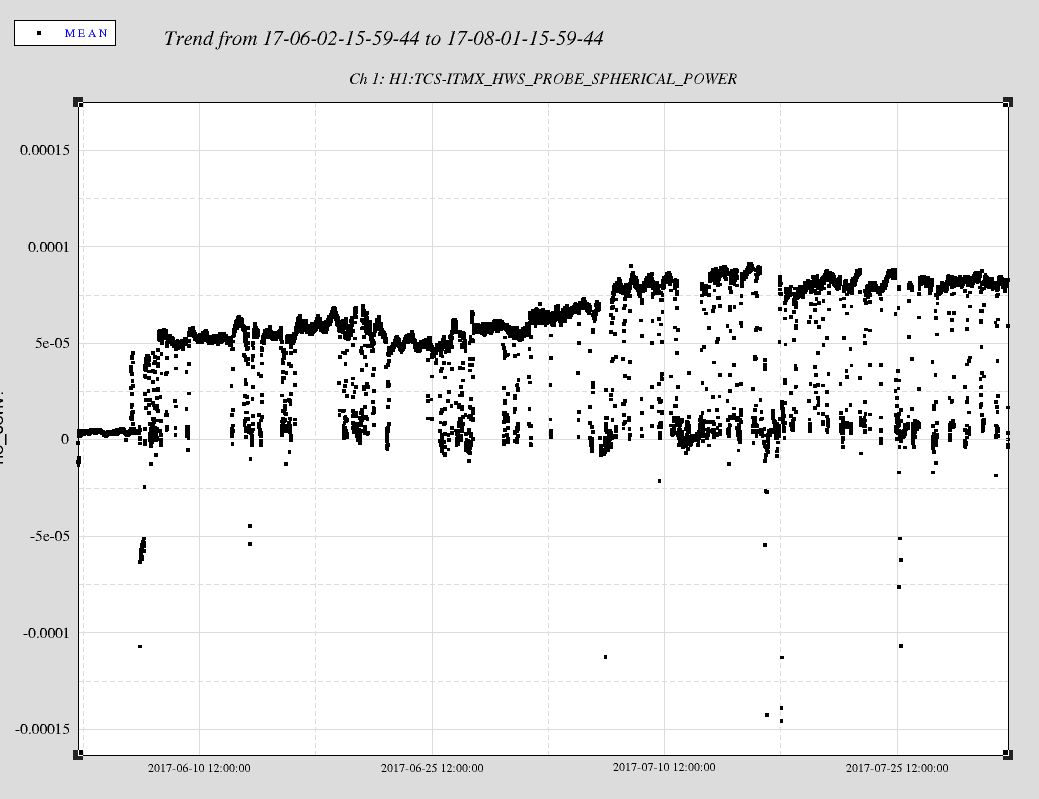[Aidan]
I've been investigating the apparent increase in range that occurred this morning when CO2X was turned off. This would seem to indicate that either (a) the CO2 laser is somehow misaligned/or deformed and causing a very poor lens, or (b) the present level of lensing (SELF heating + CO2) is too much. It's worth noting that the requested (and delivered) levels of CO2X laser power haven't changed significantly over the last four or five months.
If we assume (b) and also that the better range in the past is partially due to a better thermal state, then the conclusion is that either the effective CO2 lens or the SELF heating lens has increased.
I've gone back and looked at the HWSX spherical power data (H1:TCS-ITMX_HWS_PROBE_SPHERICAL_POWER) from two months around the period of the earthquake. The relevant value here is the spherical power change per lock (the difference between the upper and lower levels that are obvious in the time series which shows the transient lens from SELF heating and CO2 laser changes). There is an interesting period form 22-June to 7-July where this trends upwards by approximately 25 micro-diopters (or about 50%). This indicates that the apparent lens change per lock seen by the HWS is increasing significantly.

Two factors also play into this. (1) the CO2 laser is being turned on and off during this time (to keep the thermal state warm when the IFO has lost lock). However there is no significant change in the CO2 power level behaviour over the corresponding time range. (2) we know there is already a point absorber on ITMX as well as uniform absorption. The spherical power value is fitted to the low spatial-frequency lens. The presence of a known high spatial frequency point in the wavefront complicates this. For example, it's possible that the HWS alignment may be drifting and the point absorber is contributing more to the total spherical power value. This obviously needs to be investigated further by looking at the stored gradient fields.
However, it does seem that there is a real effect going on as the range got much better (~15% better) when the CO2 laser turned off.
One thing to note is that if the IFO beam is moving across the surface of the optic (specifically, across the point absorber), then we would see a 50% increase in the amount of absorbed power if the IFO beam moved by dr = 7-10mm. This is based upon the estimate of the point absorber at a radius (r_point) of something like 36-44mm from the center of the optic. (see aLOG 35071 and aLOG 34868)
Specifically: dP_abs = exp(-2*[(r_point - dr)/w0]^2) - exp(-2*[(r_point)/w0]^2)
relative_change = dP_abs/exp(-2*[(r_point)/w0]^2)

